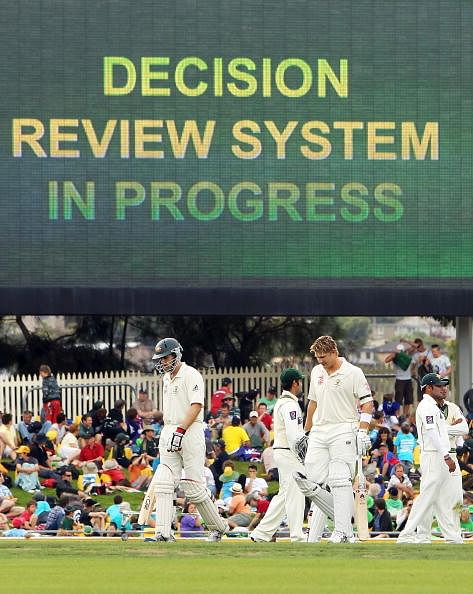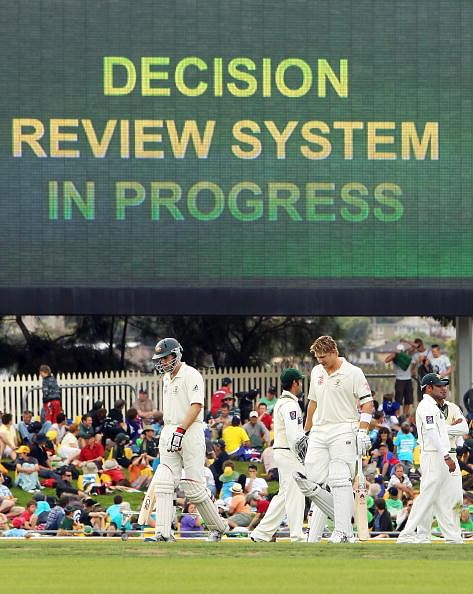
New UDRS regulations - The good and the bad

DRS – A mystery?
Whether successful or not, the Umpire Decision Review System (UDRS) has been the talk of the cricketing world ever since its inception.
It was made to eliminate the element of human error and thus, render decision making almost 100% full-proof. But that hasn’t been the case. Worse still, it has overturned decisions which were correct to begin with, owing to technology limitations and the rules that go along with it that have sometimes favoured one team over the other.
Now there’s another reason to debate its feasibility with the new ICC rule, which will come into effect starting October 1. The rule gives an addition of two unsuccessful reviews to both playing teams after 80 overs have been bowled in a Test Match innings. This change is being seen as a direct offshoot of the Ashes Test series this year that fueled the controversy surrounding the system even more.
Jonathan Trott was wrapped on the pads by a Mitchell Starc delivery, and was given not out originally. Australia took a review and got the decision in their favour to everyone’s surprise. The replay showed a perfect lbw, but Trott indicated that he had edged the ball.
That could not be verified since Hot Spot was occupied with a previous ball dismissal. This is seen as an instance where the UDRS overturned a seemingly correct human decision. Usman Khawaja was adjudged out on a Graeme Swann delivery, which he felt he had not nicked. He went upstairs, but the third umpire could not help him for want of conclusive evidence, even though Hot Spot did not declare him out.
Stuart Broad was at the center of the biggest row surrounding the DRS. He refused to walk after he edged one to Michael Clarke in the slips. The edge was missed by umpire Aleem Dar. The replays very clearly showed an edge off Stuart’s bat. The Australians were furious at him for not walking out on his own, and they had no reviews at their disposal, having used up their allotted quota before itself.
Broad went on to score a useful 65, which was one of the key events of the match considering that Australia lost the game eventually, falling short by 14 runs, chasing a total of 310 set by England. This incident is probably the one that has brought about the new rule which will be observed starting next month.
It may prove useful because it will ensure more correct decisions from now on. It will be of a special significance in scenarios like this where a lower order batsman takes the game away from the opposition when they have no reviews left because they have used it up against the top order.
It is almost a double standard if a tail-ender is able to get away with a wrong on-field decision while the top order is subjected to the best technology available to decide their stay at the crease. This new rule can avoid such mishaps in the future.